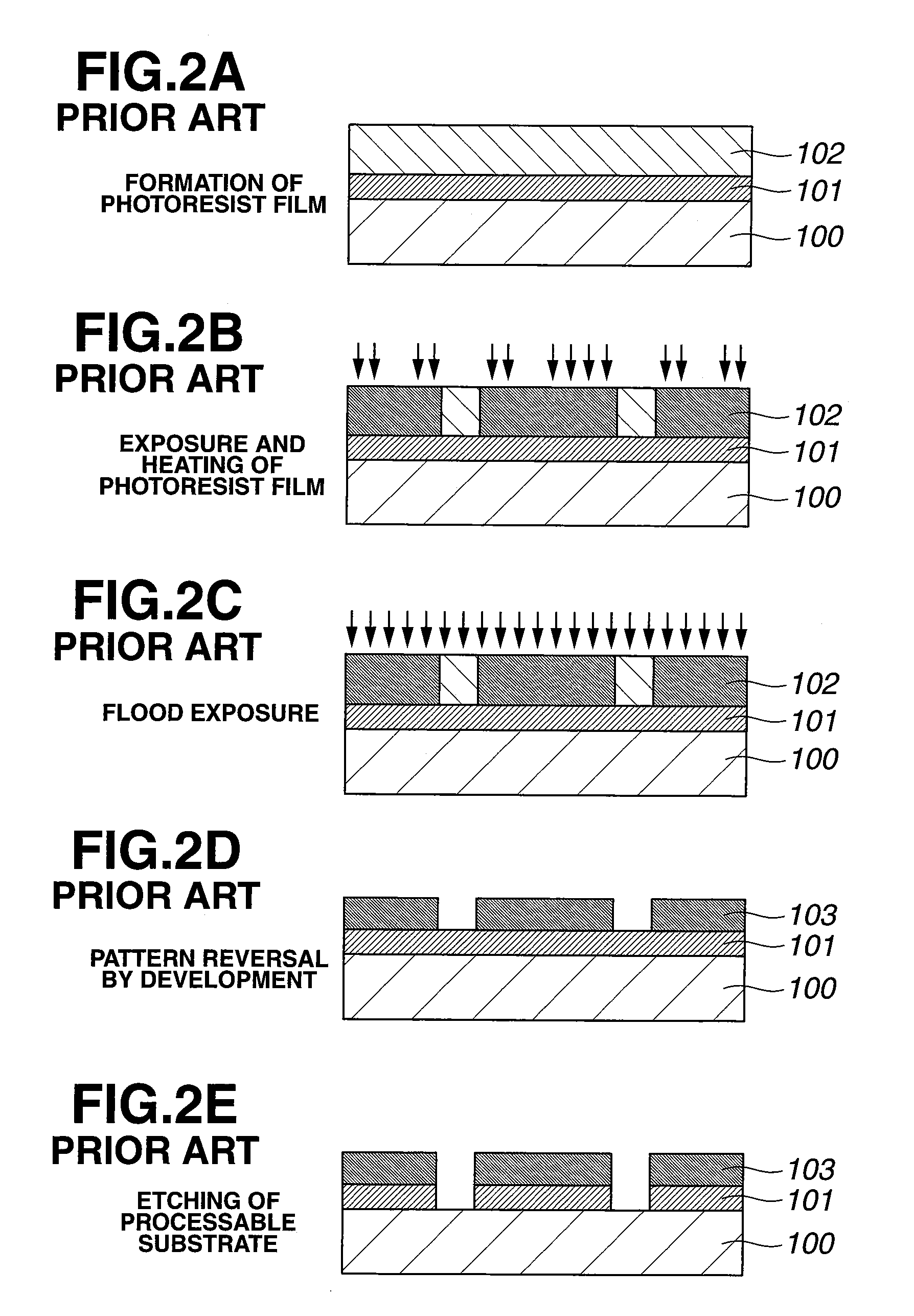Patterning process
a pattern and process technology, applied in the field of pattern formation process, can solve the problems of reducing throughput, fine pattern cannot be formed, and positive pattern can be disrupted by organic solvent used for coating, so as to improve resolution and process margin, high throughput, and the effect of improving the resolution and process margin
- Summary
- Abstract
- Description
- Claims
- Application Information
AI Technical Summary
Benefits of technology
Problems solved by technology
Method used
Image
Examples
example
[0282]Examples of the invention are given below by way of illustration and not by way of limitation. The abbreviation “pbw” is parts by weight. For all polymers, Mw and Mn are determined by GPC versus polystyrene standards.
synthesis examples
[0283]A polymer for use in a reversal film-forming composition was prepared by combining monomers, effecting copolymerization reaction in tetrahydrofuran medium, crystallization in methanol, repeatedly washing with hexane, isolation, and drying. The resulting polymer (Polymer 1) had the composition shown below. Notably, a phenol group on a monomer was substituted by an acetoxy group, which was converted back to a phenol group by alkaline hydrolysis after polymerization. The composition of the polymer was analyzed by 1H-NMR, and the Mw and Mw / Mn determined by GPC.
[0284]
[0285]A reversal film-forming composition was prepared by combining Polymer 1, a basic quencher, and a solvent in accordance with the formulation of Table 1. To the solvent, 100 ppm of a fluorochemical surfactant FC-4430 (3M-Sumitomo Co., Ltd.) was added. The reversal film-forming composition was coated onto a HMDS-primed 8-inch silicon substrate and baked at 110° C. for 60 seconds to form a pattern reversal film of 60...
PUM
| Property | Measurement | Unit |
|---|---|---|
| transmittance | aaaaa | aaaaa |
| refractive index | aaaaa | aaaaa |
| wavelength | aaaaa | aaaaa |
Abstract
Description
Claims
Application Information
 Login to View More
Login to View More - Generate Ideas
- Intellectual Property
- Life Sciences
- Materials
- Tech Scout
- Unparalleled Data Quality
- Higher Quality Content
- 60% Fewer Hallucinations
Browse by: Latest US Patents, China's latest patents, Technical Efficacy Thesaurus, Application Domain, Technology Topic, Popular Technical Reports.
© 2025 PatSnap. All rights reserved.Legal|Privacy policy|Modern Slavery Act Transparency Statement|Sitemap|About US| Contact US: help@patsnap.com



